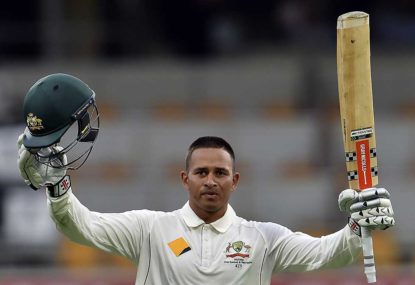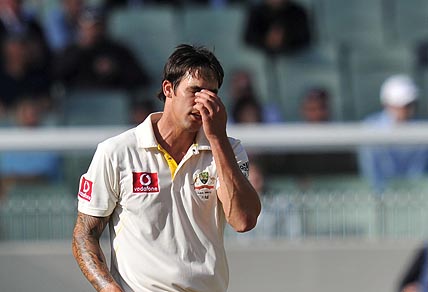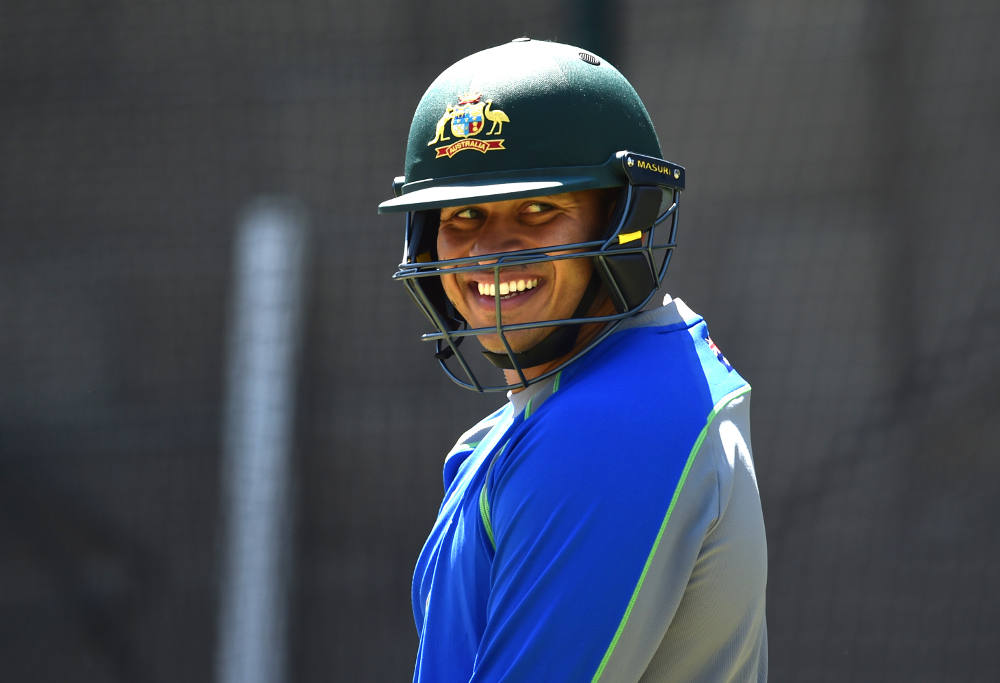'Big achievement': Jason Gillespie secures major appointment as Pakistan Test coach
Australian fast bowling great Jason Gillespie has been named head coach of Pakistan's Test team, as the nation overhauls its coaching department ahead of…

The eve of the first Test of the summer has arrived and a precarious Australian outfit is set to host a South African side intent on repeating the havoc it wreaked down under in the 2012-13 series.
In Ricky Ponting’s final Test, the Proteas overran a depleted Australian side at the WACA in the third and final match to clinch a 1-0 series win four Australian summers ago.
In Adelaide the week prior, a dogged debutant in Faf Du Plessis combined with middle-order stalwart AB De Villiers to dead-bat through 96 overs between themselves in the fourth innings to salvage an arousing draw. Du Plessis’ defiant fifth-day century stands as one of the most impressive Test match innings in recent memory.
A rain-affected Gabba Test saw the opening match fizzle out.
We fast-track four years and there are a number of hot topics surrounding the opening clash.
The WACA pitch
The traditionally fast, bouncy WACA wicket became a distant memory last November, when Australia and New Zealand engaged in a run-fest of gluttonous proportions.
Warner’s bludgeoning 253 stands as the second-highest individual score in history to be surpassed by an opposition player in the same Test. The highest is Aravinda de Silva’s 267 exceeded by Martin Crowe’s 299 at Wellington in 1991.
So little did the wicket in Perth offer bowlers that it led to Mitchell Johnson’s shock retirement from international cricket. Just two summers prior, the left-armer captured four wickets in the Poms’ second dig at the WACA to hand the visitors their third series loss en route to an Ashes whitewash.
The lack of pace and bounce in last summer’s WACA pitch was one concerning sight. Seeing thick edges fall short of the slips cordon and one of the world’s fastest bowlers struggle to rattle the grills of opposition batsmen certainly did not bring back visions of the WACA of old.
However, the biggest concern with the wicket was that it didn’t allow for an even contest between bat and ball.
WACA curator Matthew Page recently said he will leave extra grass on the pitch for tomorrow’s Test to ensure bowlers are given more of a sniff. He said that in light of last summer’s substandard flat pitch he would ideally have a fast, bouncy wicket in order for this year’s Perth Test, but that a mild spring hasn’t made that possible.
Last week’s Sheffield Shield clash between Western Australia and South Australia at the WACA showed glimpses of last year’s batsman-friendly Perth Test. The Redbacks yielded 9/505D in their first innings and the match had three centurions. Hopefully it was not an omen of what’s to come, although Halloween could well have one last trick in its bag.
One reason that ensured last November’s inaugural day-night Test at Adelaide was such a success was that the pitch gave both batsmen and bowlers a chance. Let’s hope we see a similarly tight tussle in Perth tomorrow, albeit a longer-lasting match.

Kagiso Rabada
After just eight Tests, 21-year-old South African Kagiso Rabada already has three five-wicket hauls to his name which is as many as Andrew Flintoff and Lasith Malinga captured in their entire careers. Now if that’s a fun fact that won’t give Australia’s batsmen butterflies in the WACA change rooms, I don’t know what could.
Perhaps what’s more impressive is that in January this year, Rabada recorded the second best Test match figures for a South African when he tore through England in Centurion to record figures of 13/144. His 7/122 in the first innings claimed the wicket of every batsman from number two through to number seven, as well as a tail-ender.
To have recorded better match figures than all bar Makhaya Ntini (13/132) is nothing short of extraordinary given the vast depth of great bowlers South Africa has produced. Hugh Tayfield, Mike Proctor, Allan Donald, Shaun Pollock and Dale Steyn are four of the greatest bowlers to have ever lived.
Rabada boasts a healthy Test bowling average of 24.44 and a devastating strike rate of 38.9.
Perhaps the most significant fact to point out, however, is that the right-armer will combine in Perth with spearhead Steyn and fellow strike bowler Vernon Philander. Together they will form a cartel of fast bowlers more capable than any other attack in world cricket of taking the required 20 wickets to win the opening Test.
Aristotle did say, after all, that the “Whole is greater than the sum of its parts.”
Usman Khawaja
After being unceremoniously dropped for the third Test in Sri Lanka in August, Usman Khawaja has been handed another lifeline from the Australian selectors ahead of the Perth Test.
It is an opportunity the 29-year-old will want to take with both hands, because it has the potential to reignite a long-term ownership of Australia’s first drop position.

Ever since Ponting made the move down the order from first drop to second drop in 2011, the number three position has been a matter of musical chairs. Khawaja, Shaun Marsh, Shane Watson, Rob Quiney, the late Phillip Hughes, David Warner, Michael Clarke, Ed Cowan, Alex Doolan and Steve Smith have all been subject to legitimate experimentations undergone by the Australian selectors in search of a long-term first drop.
It is a dilemma that can be compared to that of Australia’s extensive search for a spinner post-Shane Warne, however Nathan Lyon has for a long time consummately assumed the role.
Khawaja enjoyed a highly rich vein of form against New Zealand and the West Indies last summer. He compiled 304 runs at an average of 152 against the Kiwis and 200 runs at 100 against the West Indies.
He then also took the Big Bash by storm in an unbeaten innings of 104 to take the Thunder through to its first final berth.
It would take a harsh critic to agree that Khawaja’s axing in Sri Lanka was justified. Now that the elegant left-hander has been recalled, though, Australia needs to see him produce another quality home summer with the blade. If anyone was to stamp their credentials as Australia’s long-term first drop this summer, recent scorecards would tell you that Khawaja is the man.
Let’s hope the Queenslander can begin with a successful opening Test against South Africa. A big innings against such a formidable bowling attack could resolve Australia’s ongoing first drop woes.
Bring on the first ball.